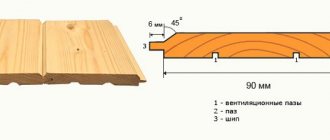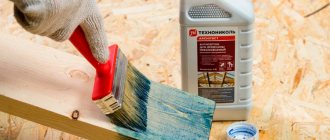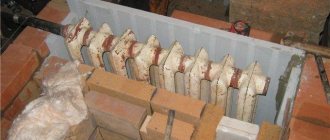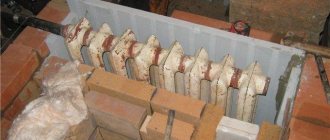Swimming in a pool brings real benefits and a lot of pleasure if the water is clean and safe for health. This is possible with timely cleaning and disinfection of hydraulic structures. Hydrogen peroxide for the pool (perhydrol) is a popular product that effectively purifies and disinfects water.
The use of peroxide requires a responsible approach, both during the preparation of the solution and during processing. Perhydrol has undeniable advantages, but if its use is not possible, you should use equally effective alternatives, which we will also discuss.
How to use perhydrol to clean a pool
To disinfect water, you need to use special perhydrol correctly. Cleaning a pool with hydrogen peroxide goes through several stages.
Before and after cleansing
Calculation of hydrogen peroxide for a swimming pool
The consumption of perhydrol depends on the volume of the bowl and the degree of contamination. To calculate how much hydrogen peroxide to add to the pool, you can refer to the table of consumption per 1000 liters of water, in grams.
| Degree of water pollution | Perhydrol concentration 30-40% | Perhydrol concentration 60% | Exposure time |
| Low | 500-700 g | 400-500 g | 24 hours |
| Moderate | 800-1100 g | 600-700 g | 48 hours |
| High | 1200-1400 g | 700-800 g | 72 hours |
| Prophylactic use | 200-300 g | 100-150 g | 12 hours |
Important! If the concentration of the substance in the water is too high, burns may form on the human skin when swimming.
Precautionary measures
Concentrated peroxide solution is assigned hazard class 2. This is far from a harmless substance.
Accidental ingestion of a 30% hydrogen peroxide solution can be fatal. The lethal dosage is 50–100 ml (half a glass). In addition, concentrated solutions cause burns to the skin and mucous membranes.
Taking safety measures when using perhydrol is a must:
- When working with the substance, you must protect your eyes with goggles or a mask, and your hands with gloves.
- The liquid should be poured carefully to avoid splashing.
- Do not swim in the treated water for the next 24–72 hours.
- After use, the container should be rinsed several times with running water.
- It is unacceptable to store the drug in a place accessible to children or among food products. The canister must be securely hidden, closed and labeled.
We recommend: How to replace antistatic agent for clothes: recipes from improvised means
If hydrogen peroxide gets on your skin, rinse it with plenty of water as quickly as possible. If blisters, redness, burning or itching appear, you should consult a doctor.
Stages and methods of cleaning a pool
Before using hydrogen peroxide, the bowl must be prepared. Cleansing takes place in several stages:
- Leaves and large debris are removed using a net.
- Remove plaque from the walls and bottom with a special scraper.
- Check the pH of the water. The indicator can vary from 7.2 to 7.6. If it is elevated, chemicals are used to lower the pH.
- To add perhydrol, use a circulation pump or do it manually.
Cleaning the walls of the bowl
See also: Catalog of companies that specialize in swimming pools and equipment for them.
How to clean a pool with perhydrol using a circulation pump
A container with a diluted disinfectant is placed at the side on a low stand. The hose is lowered into this container. The other end of the hose, with the bulb, is immersed in the pool, at a distance of about 20 cm from the water intake nozzle.
After pouring all the cleaning agent into the water, wait the required amount of time, depending on the concentration of the solution and the degree of contamination of the pool. Then the plaque formed as a result of oxidative processes is removed from the walls and bottom.
Important! When carrying out cleansing, you should not cover the bowl so that active oxygen has an unhindered exit.
How to clean a pool manually
The disinfectant composition is poured into a garden watering can or plastic canister. They spill it around the perimeter of the pool. In this case, the filtration system must work so that the perhydrol is quickly mixed and distributed throughout the entire volume.
Important! Avoid contact of the substance with the walls, otherwise the material will become discolored.
When cleaning the pool manually, protective equipment is required: gloves, goggles.
Answers to the most frequently asked questions
1. What is the frequency of preventive cleanings?
If all calculations were performed correctly and the result is satisfactory, the next cleansing is carried out no earlier than 30 days later.
2. Is it better to use peroxide or chlorine?
Chlorine is the most well-known disinfectant and can quickly destroy most types of bacteria. It is recommended for cleaning swimming pools in almost all sanitary organizations. Hydroperite is a stronger and more effective drug if it is necessary to remove any traces of organic matter, sweat or urine, etc. It does not disinfect as well as chlorine, but it can cope with a small bowl volume. Among its advantages is the absence of odor and influence on pH. The correct answer is: alternate the substance.
3. If there is still liquid left in the container after use, will the opened container lose its properties and the shelf life will be reduced?
No. The concentration decreases very slightly, no more than 0.5% in 30 days.
4. Should peroxide be poured into the reservoir as soon as it is filled with water, or should it wait until it becomes dirty and cloudy?
You can use the drug at the first manifestations of turbidity, but it is better to fill it right away, as a preventive measure - there is no difference.
Main table dispenser AquaPro 919H/RO (hot and cold water)
Main table dispenser AquaPro 929CH/RO (cooling/heating)
Floor dispenser AquaPro 311 (empty, without cooling)
5. If the water mass is heavily polluted, like a swamp, is it worth using the composition?
Yes, but please note that the disinfection period will be longer than usual.
6. What to do if H2O does not become transparent after the events?
There may be several reasons: incorrect dosage, not enough time has passed, there are many impurities of lime and chlorine inside. The liquid should be purchased only from trusted manufacturers, so as not to purchase a fake that will be ineffective.
7. If a certain amount of new water is added to the pool, is it necessary to add hydroperite again?
Preferably as a preventive measure.
8. If a reservoir is chlorinated, after what period is perhydrol added?
Usually no earlier than 5-7 days.
9. If salty liquid is poured into the bowl, is the use of peroxide effective?
No, in this case it is not recommended to use the product.
10. How does the solution affect children and animals. They may accidentally ingest H2O while swimming. Will it do any harm?
At a rate of 700 grams per 1000 liters, the percentage is 0.7 grams per 1 liter. These are the indicators immediately after use. Within a day the concentration decreases significantly. Therefore, it is not recommended to swim only during the action of the chemical compound. In the future, the water mass is safe.
11. After pouring the product inside, should the filter be turned on immediately or wait?
It is better to start it at the same time, since a suspension begins to form in the very first minutes. Keep it clean, as actively formed dirt can quickly clog it.
Pros and cons of cleaning a pool with hydrogen peroxide
The advantages of this disinfection method include:
- low cost of the product;
- no pungent odor;
- constancy of acid-base balance;
- eliminating the green tint of water;
- results are maintained for up to several months.
Perhydrol as a cleanser also has a number of disadvantages:
- low efficiency at water temperatures above 270 C;
- the need to alternate with other cleaning methods due to the possibility of developing allergic reactions in humans;
- re-use after 1-2 months.
Purified water clarity
Operating principle
Hydrogen peroxide or perhydrol is a colorless and odorless liquid that is easily soluble in water. The chemical formula is H2O2. The molecules of the substance are not strong and easily break down into water and active oxygen. This explains the possibility of using peroxide to disinfect the pool.
Active oxygen quickly kills pathogenic microorganisms and dangerous bacteria, helps clarify water and gives it crystal purity in appearance and composition. The walls also become cleaner. At the same time, the acid-base balance of the liquid is not disturbed, which minimizes additional costs associated with maintaining the reservoir.
Common mistakes
To avoid the unpleasant consequences of using perhydrol, check out the most common mistakes:
- incorrect dosage of hydrogen peroxide for the pool;
- simultaneous use of several drugs, while the interval between them should be at least 5 days;
- insufficiently thorough preparation of the bowl, when part of the plaque remains on the bottom and walls of the bowl;
- replacing part of the water after cleaning without adding hydrogen peroxide to the pool;
- poor-quality cleaning of the suspension formed after oxidation, which is mixed with water.
Rusty water and debris in the pool due to poor cleaning
Other chemistry for disinfection
In addition to peroxide, it is possible to disinfect a pool using other means, each of which has its own application characteristics and level of effectiveness.
| Disinfectant | Advantages | Flaws |
| Chlorine | cleaning of all surfaces, long-lasting action, high-quality disinfection, low price. | the reaction is accompanied by the formation of toxic substances, the effectiveness decreases over time, because microorganisms acquire resistance and are not able to destroy spore-forming organisms. |
| Salt | naturalness, safety. | for high-quality cleaning it is necessary to install a salt system, corrosion of water supply systems, high cost, not all pathogenic microorganisms are destroyed. |
| Algaecides | elimination of algae, safety, ease of use. | price, does not eliminate all types of pathogenic organisms. |
| Complex action tablets | disinfection, purification, prevention of algae, water clarification, maintaining an optimal pH level. | price, does not cope with all contaminants, composition. |
| Copper sulfate | eliminating water blooms, obtaining clear water, eliminating fungus. | unnatural composition, does not cope with bacteria and viruses. |
When choosing a product, various factors must be taken into account, including:
- ease of use;
- allergies to certain substances;
- price;
- availability of funds;
- exposure time;
- prolongation of the effect, etc.
Compared to other products, perhydrol is a worthy choice, providing high-quality purification from organic matter and clarification of water for a long period.
How to keep your pool water clean
In order for water to remain clean and transparent for a long time, several conditions must be met:
- Pets are not allowed in the pool;
- do not wash dishes and other items in it;
- litter is collected from the surface of the water in a timely manner;
- the bottom and walls are cleaned of algae and rusty deposits, removing them with a scraper;
- do not mix different cleaning compounds, for example, hydrogen peroxide and chlorine.
- Finally, they don’t get lazy and don’t skip the next cleaning time.
Where and at what price are they sold?
You can purchase peroxide in specialized household chemical stores and online stores.
The cost of peroxide depends on several factors:
- place of purchase;
- manufacturer;
- container volume;
- concentration.
You can buy 10 liters for a price of 1,000-1,300 rubles, 30 liters - from 2,300 rubles. Many stores provide a discount on goods when ordering in small quantities.
When purchasing, you need to check the expiration date of the product , since expired perhydrol loses its effectiveness as a result of long-term storage - by about 10-15% every six months.
Description of the product, its effectiveness
The chemical compound of oxygen with hydrogen (peroxide, perhydrol, hydrogen peroxide) is an unstable compound that is colorless and odorless, but has a “metallic” taste. There are several types of peroxide.
Special for pool
The pool industry produces special peroxide-based products. For example, Oxytest, a water disinfectant based on active oxygen.
The product has effective disinfectant properties and can easily and quickly make water fresh, clean and clear. The most important advantage of this drug is its absolute safety from an environmental point of view.
Medical
This type of peroxide is produced electrochemically , using persulfuric acid in the production process. This explains the presence of the latter in the peroxide composition.
The mass concentration of sulfuric acid in the general composition of peroxide for medical use is 0.30 g/liter. The amount of peroxide itself in the chemical composition ranges from 30 to 40%.
Technical (grade A and B)
Technical perhydrol comes in 2 grades: A and B.
The method for producing technical grade A peroxide is similar to the production of medical grade . The differences are minimal. This is a slightly higher concentration of peroxide in the solution - 35-40% and sulfuric acid itself - 0.35 g / liter.
Technical peroxide grade B does not contain sulfuric acid, since it is obtained in a different way. This is an organic method, which is based on the process of liquid-phase oxidation of isopropyl alcohol.
The highest grade of peroxide, grade B, is equal in mass fraction in the solution to grade A. The first grade is less concentrated. It is 30-40% similar to medical.
When using the organic method for the production of grade B peroxide, acetic acid appears. Its concentration parameters:
- premium grade B contains 6 g/liter;
- Brand B of the first grade has 8 g/liter.
All types of peroxide produced are stabilized in order to increase shelf life.
What concentration is there, which one is suitable for water purification?
So, as mentioned above, according to their purpose and concentration, 2 types of peroxide are produced:
- Medical, 30-40%.
- Technical grade A, 35-40%.
- Technical grade B:
- premium grade from 35 to 40%,
- first grade from 30 to 40%;
- concentrated technical from 60% and above.
Since peroxide in solution has a very wide range of uses, the concentration range can be from 6 to 98 percent. A concentration of 60 percent or higher is extremely explosive.
For the pool it is allowed to use all types of peroxide , since the difference between the first two (medical and its technical analogue, grade A) and peroxide, grade B, is the presence of sulfuric acid.
Its amount is from 0.30 to 0.35 g/dm3 in the first two, but is not contained in grade B. This percentage is so tiny that it doesn’t matter and is absolutely safe.
List of alternatives
Hydrogen peroxide is not the only means for cleaning and disinfection when servicing swimming pools. For this purpose, other substances are also used for the environmental treatment of artificial reservoirs.
Each of them has its own advantages, but there are also disadvantages, so the choice of product remains up to the consumer:
- "Kenaz Kenarit Multi 6 in 1";
- "Algitinin";
- "Longafor";
- "Chloritex";
- "Chloroxone";
- "Equital: coagulation of water."
You will find a lot of important and useful information about the use of hydrogen peroxide to purify pool water in this section.
Features of use
Hydrogen peroxide is often used to purify water in artificial ponds and swimming pools. But this remedy is not as safe as people think of it. Abuse of dosages and frequency of use of peroxide can cause extremely negative consequences for the body.
Benefit
The drug destroys pathogenic microflora in water, bacteria and fungus , as well as biological traces - sweat and keratinized particles of the epidermis. Thanks to this, there is no risk of contracting skin and infectious diseases. The water remains clean for a long time, without a green tint.
Harm
Peroxide can cause harm in the form of burns or an allergic reaction only if its concentration is exceeded.
In addition to burns of the mucous membranes, frequent swimming in a pool with perhydrol can lead to the following consequences (if the substance gets inside):
- disruption of cholesterol metabolism;
- DNA destruction and mutation;
- changes in hemoglobin composition;
- negative impact on enzyme functions of the body.
The drug has a particularly negative effect on women and children’s fragile bodies. Swimming in the water infrequently will not cause any harm. But if you use this disinfection method constantly, slow but irreversible consequences will begin to occur in the body.
It is highly recommended not to swim in water purified with peroxide.:
- pregnant women,
- small children,
- people with weakened immune systems and hemoglobin problems.
Peroxide can cause damage to the pool if the disinfectant gets on the walls of the tank. The material will become discolored upon contact with the disinfectant chemical.










